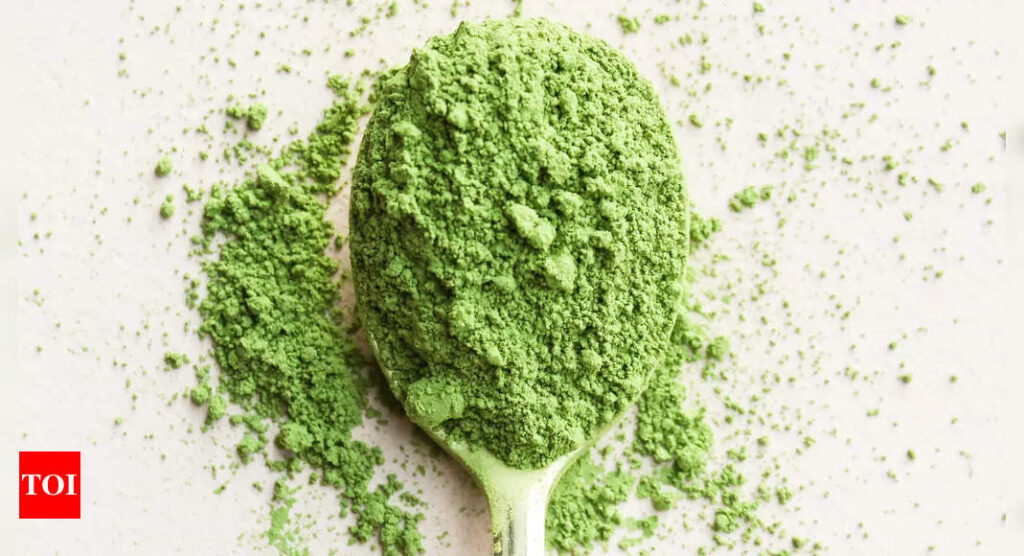Ayurvedic powders for hair: These 5 Ayurvedic powders are best for instant hair growth |

Ayurveda, the ancient science of healing, has long been a trusted source for natural remedies, especially when it comes to hair care. If you’re looking to boost hair growth naturally, Ayurvedic powders are a great choice. Packed with essential nutrients, these powders strengthen hair roots, reduce hair fall, and stimulate healthy growth. Here are five of the best Ayurvedic powders for instant hair growth.
Bhringraj powder
Often referred to as the ‘King of Herbs’ for hair care, Bhringraj is a miracle ingredient for promoting hair growth. This powder is rich in nutrients that improve blood circulation to the scalp, rejuvenating hair follicles and encouraging faster growth.

Benefits: Bhringraj powder prevents hair fall, reduces dandruff, and adds a natural shine.
How to use: Mix the powder with water or coconut oil to form a paste. Apply it to your scalp and hair, leave it on for 30 minutes, and rinse thoroughly.
Amla powder
Amla, or Indian gooseberry, is a powerhouse of Vitamin C and antioxidants, making it one of the most effective remedies for hair growth. It strengthens hair follicles, prevents premature greying, and enhances natural shine.
Benefits: Stimulates hair growth, reduces hair thinning, and nourishes the scalp.
How to use: Create a paste with amla powder and water or mix it with yogurt. Apply it to your scalp and hair, let it sit for 20-30 minutes, and wash off with lukewarm water.
Shikakai powder
Known as ‘fruit for hair,’ Shikakai has been used for centuries as a natural shampoo and conditioner. Its cleansing properties ensure a healthy scalp, which is essential for rapid hair growth.
Benefits: Cleanses the scalp, strengthens roots, and prevents split ends.
How to use: Mix Shikakai powder with water to form a paste or combine it with reetha powder for enhanced benefits. Massage into your scalp, leave for 15-20 minutes, and rinse with water.
Fenugreek (Methi) powder
Fenugreek seeds are rich in protein, iron, and nicotinic acid, all of which are essential for hair growth. Fenugreek powder strengthens hair shafts, prevents hair fall, and promotes thick, healthy locks.
Benefits: Reduces hair fall, combats dandruff, and repairs damaged hair.
How to use: Mix fenugreek powder with water to make a paste, or combine it with yogurt for added hydration. Apply to your scalp and hair, leave it on for 30 minutes, and rinse thoroughly.
See more: Hair fall: How to reduce losing hair with simple tips and remedies
Neem powder
Neem is a potent Ayurvedic remedy for a variety of hair and scalp issues. Its antibacterial and antifungal properties make it an excellent choice for a healthy scalp, free of infections that can hinder hair growth.

Benefits: Promotes a healthy scalp, reduces dandruff, and strengthens hair roots.
How to use: Combine neem powder with water or coconut oil to make a paste. Apply it to your scalp, leave it on for 20-30 minutes, and wash it off with lukewarm water.
Keep these things in mind!
Ayurvedic remedies work best with regular use. Apply these powders at least once a week to see noticeable results.
Combine with oils: Mixing these powders with coconut, castor, or almond oil enhances their effectiveness.
Follow a balanced diet: Hair growth is also influenced by internal health. Incorporate a diet rich in protein, vitamins, and minerals for optimal results.
Stay hydrated: Drinking plenty of water ensures a healthy scalp and hair.
Best natural home remedies for hair growth
Ayurvedic powders offer a natural, chemical-free way to boost hair growth and maintain overall hair health. From Bhringraj to neem, these remedies not only promote growth but also address common scalp issues, ensuring luscious locks in no time. With regular use, you can experience stronger, thicker, and healthier hair—just as nature intended.
Give these Ayurvedic powders a try and let your hair growth journey begin!








